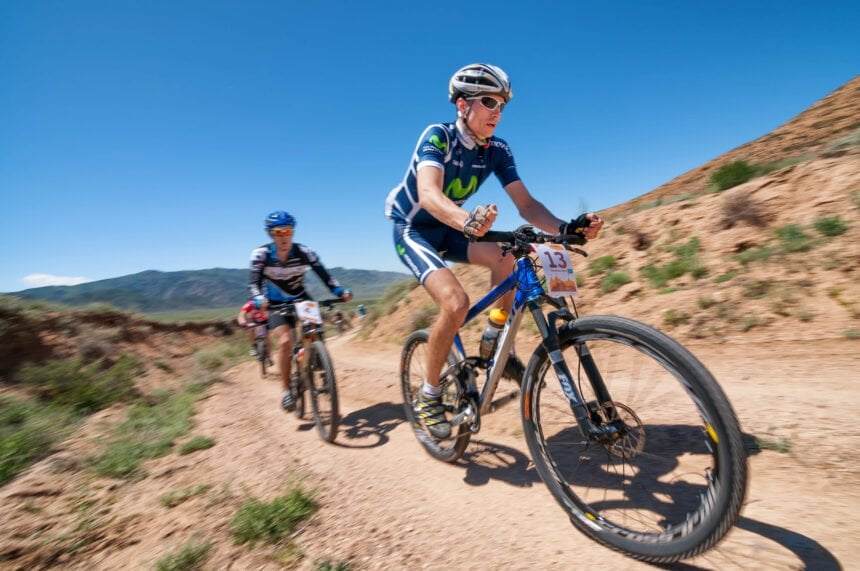We have talked a lot about the health benefits of biking. Biking can help improve your cardiovascular health and keep your respiratory system healthy. Biking is also a great way to lose weight. A half hour of moderate biking can burn 260 calories.
However, there are also some downsides of biking. You have to worry about getting in an accident, which can lead to lasting injuries. We talked about some of the things that you can do to reduce the risk of a biking injury, but there are other tips that we wanted to cover that we didn’t go over already.
This article is going to cover some important health and safety tips for bicyclists. Keep reading to learn more.
Important Tips to Avoid Injuries and Stay Healthy When Biking
Off-roading your way through the mountains, hills, or purpose-built routes is one of the most exciting things you can get out of your passion for biking. If you already own and know how to ride a bike, it would be a shame not to try this activity once, should it draw you in.
Off-roading boils down to a few things, like the ease with which you lift off the saddle, the adequacy of your gear, and the model of your bike, to name three of the most important aspects. These tips are going to help you stay healthy and safe. As you’ll see, ticking off the necessary points to reach this milestone requires some readiness ahead of the journey. Ready?
Don’t abuse your brakes
You may find yourself giving in to the temptation to grip the brakes to the point where you’re bent over them. It’s human nature to bring the thing that will save your life closer to your body. This is why you’re reminded that brakes are effective enough to secure you when used adequately. Your brakes are possibly even more powerful than the situation needs, and despite being a thing that you learn as you progress, nailing your brake use will necessitate patience and presence of mind.
Correct your riding speed as you approach tricky movements, such as corner-taking, and keep the speed until they’re behind you. It’s one thing to slow down, and another to stop the front tire, for the latter is the error that causes many to end up thrown over. Try the rear brake confidently when it looks like it is working. You may skid, but you’re unlikely to fall off your bike.
Rely on your gears
You may or may not use your gear depending on where you’re biking. Mountains are a delight to ride, so if you can, make sure that you get the right bike and that the gear is good. You’ll lean on your gears, but just metaphorically.
Such trails may seem dangerous and unpredictable at first – which they can be if you don’t take the right bike. But fret not, because a qualit bike will cut it even on that tricky trail profile. Experts emphasize that there are usually four types of bikes and that off-roading ones are built to resist through all these bumps, be they new or second-hand. You can find a great refurbished or used acquisition on the market if you go with reliable suppliers who have made a name for their offerings. Anticipate terrain variations by shifting before the critical point arrives.
Create space for your bike to move
Your bike rolls over technical terrain by default, meaning that your duty as a newcomer to off-roading is not to prevent it from doing it. Maintain a loose posture so that it can do its job. Adjust your position a bit when surpassing rocks, twigs, branches, roots, and other good-sized obstacles by raising a bit from the saddle before riding over them. The terrain is tricky mainly, so you can’t burn the bridge when you get there.
The more technical your itinerary, the larger the room your bike necessitates to advance. Slowing it down when you fly down descents can be easy, so ensure your knees and elbows are stretched out correctly to not hinder your vehicle’s movement.
Get the right size
If you’re a newcomer to off-roading bikes, then you may have a slightly different idea about how the correct one should look. This isn’t your regular bike, and even if you’re determined to use your own one on the tricky terrain, you’ll still have to reassess its measurements to ensure it cuts it. Generally, following the supplier’s recommendations mindlessly is not advised. A bicycle must fit you; for this to happen, you have to sit on it and discover it yourself.
Try some test rides to discover the elements and aspects you need. Or take one that can be returned if you realize it doesn’t hit your spot. Numerous bikes are bought just to find out that a better alternative could’ve been chosen. This is why you may see a great yet bargain-priced Upway e-bike and wonder how it got out of other bikers’ hands. From Yamaha to Riese & Müller to Stromer, expect to see some art pieces that will live rent-free in your mind until you get your hands on one.
Know what to expect
If you’re heading to trails without asphalt, you’re likely (and hopefully) familiar with bikes and long rides. Still, your experience doesn’t make off-roading any less important since the ground necessitates a completely different approach. You may need specific suspensions to move unhindered, changed pedal power, and higher-rolling resistance tires.
Off-roading safely also means you won’t have any problem lifting off the saddle a bit and for longer than you may usually do when riding on asphalted terrain. Accelerating and decelerating feel different when you climb uneven ground, becoming punchier and shorter.
Buy off-road kit
Riding through the mountain trails is challenging if you’re not wearing the right clothes and gear, not to mention that some items may even risk your safety. Lycra, for instance, isn’t among the favorite choices for seasoned mountain bikers because it can rip effortlessly. Instead, they use pants, shorts, or padded liner shorts that permit unhindered movement without ripping or getting stuck on you.
Usually, helmets have peaks that aren’t there only for fashion purposes. These prevent inescapable twigs from distracting and destabilizing you. Moreover, there are great shoes and road pedals for off-roading that will ensure stability and ease of use while venturing on the trickiest ground. What’s certain is that your footwear must have a grip, and your pedals should be easily usable and shed mud efficiently.
If you can use clip-in/clipless pedals, it’s worth looking into them as well to help you dodge clipping obstacles.
Lastly, learn to set the suspension.
It may take some time to decipher the finer nuances of establishing how much travel you engage in as a newcomer. Nevertheless, it’s enough to learn how to lock out and open it up. The last thing you want is to fall when encountering bumps on the ground with a stiff bike.








